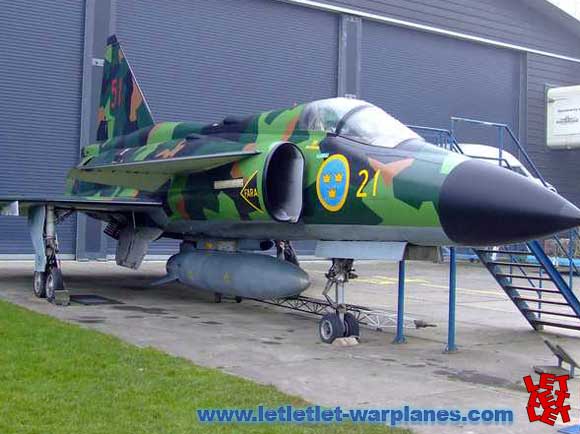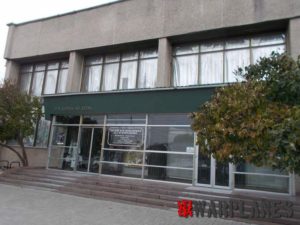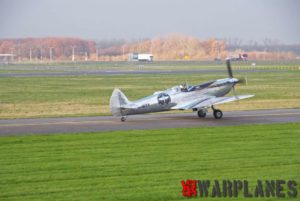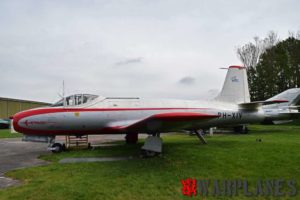Viggen at Lelystad

Viggen at Lelystad
[dropcap]T[/dropcap]he Saab 37 Viggen was a Swedish single-seat, single-engine, short-medium range fighter and attack aircraft, manufactured between 1970 and 1990. Several variants were produced to perform the roles of all-weather fighter-interceptor, ground attack and photo-reconnaissance, as well as a two-seat trainer. The AJ 37 was designed to carry two RB 04E anti-ship missiles on the inboard wing pylons with an optional third missile on the centerline pylon. An optional load consisted of two RB 05A air-to-surface missiles on the fuselage pylons. The RB 05A was later replaced by Rb 75 TV-guided missiles. In a ground-attack role, a combination of unguided 135 mm rockets in sextuple pods and 120 kg fragmentation bombs on quadruple-mounts could be used. Self-defense was provided with either ECM or 30 mm ADEN cannon pods with 150 rounds of ammunition[20] on the inboard wing pylons.

Rockets had warheads of several types: the 50 mm M56GP 4 kg armour-piercing, the M56B with 6.9 kg of HE, and the M70 with a 4.7 kg HEAT warhead. For the secondary air-to-air role and self defence, the Rb 28 IR-missile was initially selected, but was never used due to poor performance. This left the outboard wing pylons unutilised as the Rb 28 was the only missile integrated there up until the AJS modernisation. Instead, Rb 24/Rb 24J were used on the fuselage pylons and inboard wing pylons or in combination with optional 30 mm underwing ADEN cannon pods. AJ 37 was under consideration as a carrier of both nuclear and chemical weapons, although no nuclear or chemical weapons were adopted by Sweden.
After the retirement Swedish Air Force has donated samples of Viggen to the museums in Europe. On the January 13, 2003, Captain Niklas Sandström flew one AJ-37 Viggen from F21 AFB in Luleå, Sweden, to the Lelystad airport in Netherlands.
Srecko Bradic

































